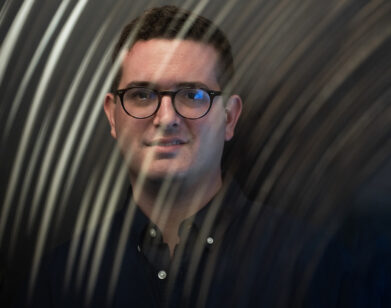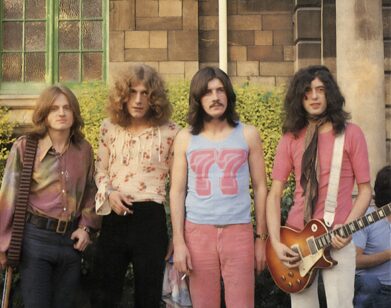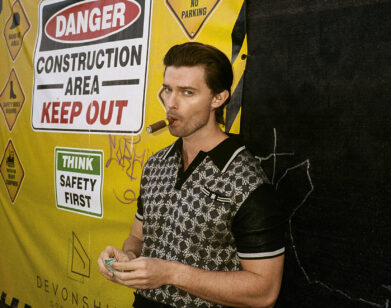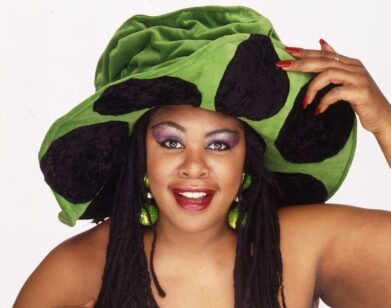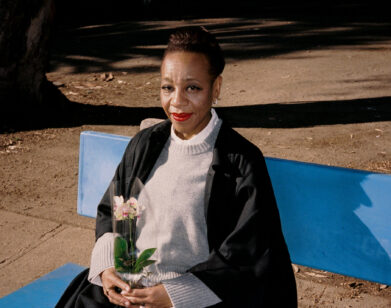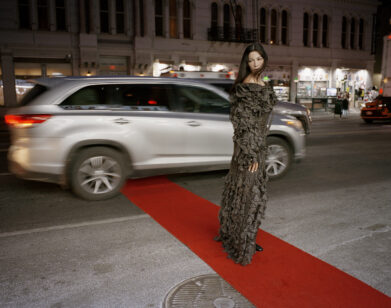The Dead Boy
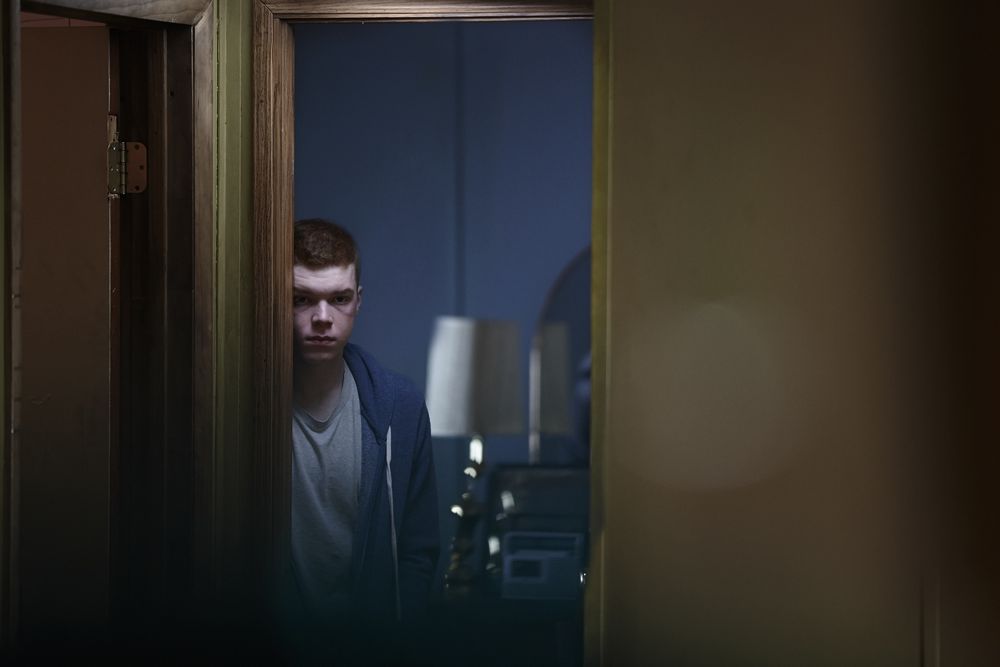
ABOVE: CAMERON MONAGHAN IN JAMIE MARKS IS DEAD.
With films like Mike Cahill’s I Origins, William Eubanks’ The Signal, and Jim Jarmusch’s The Only Lovers Left Alive, there was a strong trend towards the supernatural at this year’s Sundance Film Festival. Jamie Marks is Dead, the second film from fashion photographer and writer-director Carter Smith, falls into this category. Based on the novel One for Sorrow by Christopher Barzak, the film follows Adam (Cameron Monaghan), a 15-year-old track star going through a high-school crisis, as he befriends the school outcast, Jamie Marks (Noah Silver), who recently died under suspicious circumstances. Only one other student is able to see Jamie in his posthumous form: Gracie, Adam’s semi-love interest, played by Homeland‘s Morgan Saylor. Gracie, however, is much more wary of the deceased Jamie.
Part A Separate Peace and part Harry Potter (or Moaning Myrtle, at least) the film is highly visual, shot in a somber palette of grays and cold blues. “I had an exhaustive scrapbook of images that I pulled together,” explains Smith over tea in Park City. “Everything from Andrew Wyeth watercolors, to random street photography of girls’ haircuts,” he continues. “I spent a year teaching myself how to do special effects makeup and figuring out Jamie’s look. I started a blog, called All the Dead Boys, to work through figuring out how I wanted Jamie to look.”
EMMA BROWN: Tell me how this project started. Did you read the book?
CARTER SMITH: I read the book about three years ago. I just picked it up at a bookstore randomly.
BROWN: Just for fun?
SMITH: Just for fun. Just as a reader. I fell in love with the world Christopher created. The characters and the world just seemed so specific and so special. After about 50 pages, I was like, “This would be a really great film.” I looked into the rights, got them, and spent about a year writing the script. Then almost another year pulling together financing and cast—everything with lots of stops and starts. We shot in February and March of last year.
BROWN: Every time I talk to someone at Sundance I’m so surprised at how recently they wrapped their film.
SMITH: We finished on, literally, Wednesday of last week. I flew out Wednesday night on a nine o’clock flight, and I finished the film on Wednesday at four in the afternoon.
BROWN: Were you afraid that you weren’t going to get it done in time?
SMITH: No, no. I think you always work until the last second.
BROWN: Do you think you’re going to continue to work on it after Sundance?
SMITH: No, I hope not. [laughs] It’s done; as far as I’m concerned it’s finished.
BROWN: How much did you change from the original book? I know that the book is set in Ohio, which you changed to upstate New York.
SMITH: Yeah, originally the book was set in Youngstown, Ohio, and we switched it—I switched it—to a sort of unnamed place. The thing that was important was just that it took place in a town that had seen better days—that just wasn’t doing that well. It was kind of a depressed place; gray and cold. So that certainly fit with upstate New York. In the adaptation process there was a lot of the book that I kept in for the early drafts, but then as it became more and more focused on the triangle at the center of the movie—between Adam, Jamie Marks, and Gracie—other stuff just continued to get pulled out.
BROWN: Was relationship between Jamie and Adam as intense in the book?
SMITH: Yeah, it was pretty similar. That was one of the things I really wanted to stay true to. It starts out with Jamie depending very much on Adam, and then it takes a turn where they need each other equally. That helps Adam make the decision that he finally makes.
I think Adam’s guilt has a lot to do with why he let Jamie in to his life. Knowing that you could have done something and didn’t, and also not understanding how what he witnessed might have contributed to Jamie’s death. I think that he definitely feels partially responsible for it. So much of the film is about loneliness and connection, and how hard it is to make those connections.
BROWN: Was there any one scene that was particularly difficult to realize?
SMITH: The most difficult thing was just the cold. We were shooting upstate, outside. We didn’t have any trailers. We were in a 15-passenger van between takes. It was down and dirty. Poor Noah Silver, he’s practically naked for most of the film. It was really, really tough. At one point I think I had nine cashmere sweaters on—from long underwear to overcoat.
BROWN: Do you view photography and film as two completely separate mediums? Or is one as an extension of the other?
SMITH: For me, they’re pretty separate. I think that photography, commercial photography and working in the industry, is all about selling something—whether you’re selling perfume, or clothes, or selling a magazine. With filmmaking, it’s all about telling stories, and really capturing an audience’s emotions. You’re drawing someone in and hooking them into your story for 90 minutes, two hours. With photography, you have very limited attention: as someone flips the page you have four, five, six seconds that they’re actually taking in the image. A film is more of an emotional experience.
My favorite pictures that I’ve ever taken are pictures that do have a narrative element, and tell, or hint at a story. Maybe the whole story isn’t there on the page, but it makes people stop and wonder about what just happened, or what’s about to happen.
BROWN: When you started out, did you want to be a photographer? Or were you interested in photography as an avenue into filmmaking?
SMITH: I always wanted to make films, but I was always taking pictures too. I wanted to be a storyteller. As a child, I was writing stories, drawing comic books, taking pictures. I would dress up my sister and take her into the snow in the fields behind our house and take pictures of her as this mythical creature. I was a little bit torturous. [laughs] She was five years younger than me, and she was a slightly unwilling participant.
When I started, photography was just a much more accessible medium. This was before everyone had a high-def video camera on their phone. So I picked up a camera in order to try to tell visual stories, and then things just kind of happened, one after the other, and flash forward 20 years and I’m a photographer, as well as a filmmaker. It’s interesting because I didn’t make my first short film until I had already been taking pictures for 12, 13 years. I think that really prepared me for filmmaking.
BROWN: Did your reputation as a fashion photographer help or hinder you when it came to actually getting Jamie Marks made?
SMITH: In one way it helps, because people see that you are used to working with crews, with large budgets, high-profile people, and clients that trust you with their brand. I think that that assures them that you work with a certain level of professionalism, but I don’t think that it helps more than that. The power of the story that you’re trying to tell is what causes people to invest.
BROWN: What are you working on now? Are you allowed to say?
SMITH: A couple things. I’ve become really fascinated with Brazilian black magic, so I’m working on a project about Brazilian black magic at the moment.
BROWN: Do you write in New York, or is it too frenetic?
SMITH: It depends on whatever else I’m doing at the time. I find it tricky to write when there’s too much else going on, but writing is like going to the gym, you have to force yourself to do it. If you say, “I can’t write in New York,” then you’re not a writer. If you’re a writer, then you write, or find a way to write wherever you are.
For more from Sundance 2014, click here.

